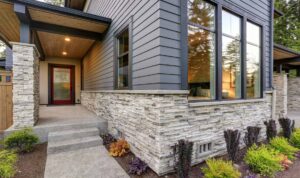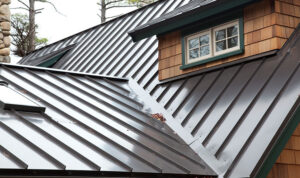Delving into the average price for siding installation, this introduction immerses readers in a unique and compelling narrative. From the different types of siding materials to tips for reducing costs, this topic covers all aspects with a balance of informative insights and practical advice.
Factors influencing the average price for siding installation
When it comes to determining the average price for siding installation, several factors come into play. These factors can significantly impact the overall cost of the project, making it essential to understand them before embarking on such a home improvement endeavor.
Types of Siding Materials
Different types of siding materials are available in the market, each varying in cost and durability. Here are some common siding materials:
- Vinyl: Vinyl siding is a popular choice due to its affordability and low maintenance requirements.
- Fiber Cement: Fiber cement siding offers a more durable option but comes at a higher price point.
- Wood: Wood siding provides a classic look but requires more maintenance and can be costly.
- Aluminum: Aluminum siding is lightweight and easy to install, but it may dent easily.
- Brick: Brick siding is durable and offers a high-end appearance, making it one of the more expensive options.
Size of the Project
The size of the project, measured in square footage, directly influences the cost of siding installation. Larger projects will require more materials and labor, resulting in higher overall costs. Additionally, the complexity of the project, such as the number of corners, windows, and doors, can also impact the final price.
Labor Costs
Labor costs play a significant role in the total price of siding installation. Highly skilled contractors may charge more for their services, but their expertise can ensure a high-quality installation. Additionally, factors such as location, seasonality, and demand for contractors can affect labor costs.
Costs Associated with Different Siding Styles
Each siding style comes with its unique costs based on materials, installation complexity, and maintenance requirements. For example, while vinyl siding is relatively affordable upfront, it may require more frequent replacements compared to fiber cement siding, which has a higher initial cost but lower long-term maintenance expenses.
Regional variations in siding installation costs
When it comes to the average price for siding installation, it is essential to consider regional variations that can significantly impact costs. Factors such as location, urban versus rural areas, climate conditions, and differences between states or regions can all play a role in determining the final cost of siding installation.
Examples of how location can influence pricing
Location plays a crucial role in determining the cost of siding installation. For example, in metropolitan areas with higher living costs, labor and material prices are generally higher compared to rural areas. Additionally, areas with higher demand for siding installation services may also experience increased pricing due to market dynamics.
Comparison of average prices in urban versus rural areas
In urban areas, the average price for siding installation tends to be higher due to increased labor costs, higher property values, and a more competitive market. On the other hand, rural areas may have lower average prices for siding installation due to lower overhead costs and less demand for services.
Impact of climate conditions on installation costs
Climate conditions can also affect the cost of siding installation. In regions with extreme weather conditions, such as heavy rain, snow, or high winds, additional measures may be required during installation to ensure the longevity and durability of the siding.
These additional precautions can lead to higher installation costs in such areas.
Differences in pricing between states or regions
The cost of siding installation can vary significantly between states or regions due to differences in labor costs, material availability, and regulations. For example, states with higher labor costs or stricter building codes may have higher average prices for siding installation compared to states with lower costs and more relaxed regulations.
Additional costs to consider during siding installation
When planning for siding installation, it's crucial to consider the additional costs that may arise beyond the basic installation expenses. These costs can impact your overall budget and should not be overlooked.
Importance of permits and regulations
Securing permits and ensuring compliance with local regulations is essential before starting any siding installation project. Failure to do so can result in fines or delays in the project, adding unnecessary costs.
Common extra charges
- Disposal fees: Proper disposal of old siding materials may incur additional charges, especially if hazardous materials are involved.
- Equipment rental: Specialized equipment needed for installation, such as scaffolding or lifts, may require rental fees that need to be factored into the budget.
Role of warranties and insurance
Having warranties for the siding materials and workmanship can provide peace of mind and protection in case of defects or issues post-installation. Insurance coverage can also play a crucial role in determining the overall cost of the project.
Examples of unexpected costs
- Structural repairs: Unforeseen structural damage discovered during installation may require additional repairs, impacting the overall cost.
- Weather delays: Adverse weather conditions can lead to project delays, potentially increasing labor costs and extending the timeline.
Tips for reducing the overall cost of siding installation
When looking to reduce the overall cost of siding installation, there are several strategies and considerations to keep in mind. Whether it's negotiating with contractors, considering a DIY approach, opting for cost-effective materials, or prioritizing maintenance, these tips can help you save money in the long run.
Negotiating with Contractors
- Get multiple quotes from different contractors to compare prices and services offered.
- Ask if the contractor offers discounts for off-peak seasons or bundling services.
- Consider negotiating the price based on the scope of work and materials used.
- Be clear about your budget and be willing to walk away if the price is not within your range.
DIY Installation vs. Hiring Professionals
- Consider your skill level and available time before deciding to tackle the installation yourself.
- DIY can save money on labor costs, but hiring professionals ensures quality work and may prevent costly mistakes.
- If opting for DIY, make sure to research and follow proper installation techniques to avoid future issues.
Cost-Effective Siding Materials or Styles
- Explore options like vinyl or fiber cement siding, which are durable and budget-friendly.
- Consider pre-painted or pre-finished materials to save on painting costs.
- Look for promotions or discounts on siding materials from local suppliers or manufacturers.
Proper Maintenance for Long-Term Savings
- Regularly inspect and clean your siding to prevent damage and early replacement.
- Address any issues promptly to avoid more extensive repairs down the line.
- Invest in routine maintenance like repainting or sealing to extend the lifespan of your siding.
Concluding Remarks
In conclusion, the average price for siding installation is influenced by various factors ranging from material choices to additional costs. By understanding these elements, homeowners can make informed decisions when embarking on a siding installation project.
FAQ Summary
What are the common types of siding materials used for installation?
Common types include vinyl, wood, fiber cement, and metal.
How does the size of the project impact the cost of siding installation?
Larger projects typically require more materials and labor, leading to higher costs.
What are some additional costs to consider during siding installation?
Additional costs may include permits, disposal fees, and unexpected expenses.
Is DIY siding installation a cost-effective option compared to hiring professionals?
While DIY can save money, hiring professionals ensures quality and expertise.







